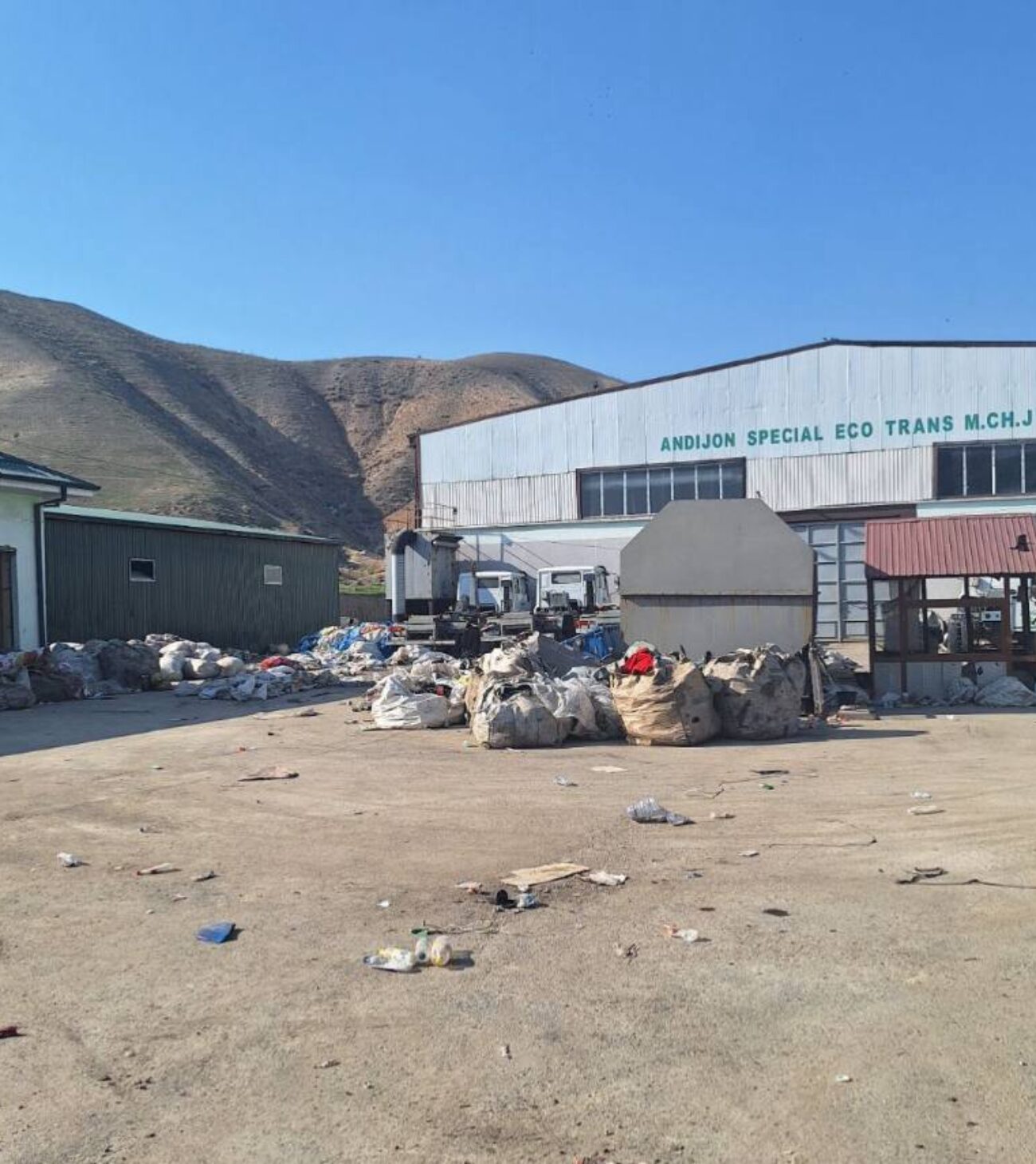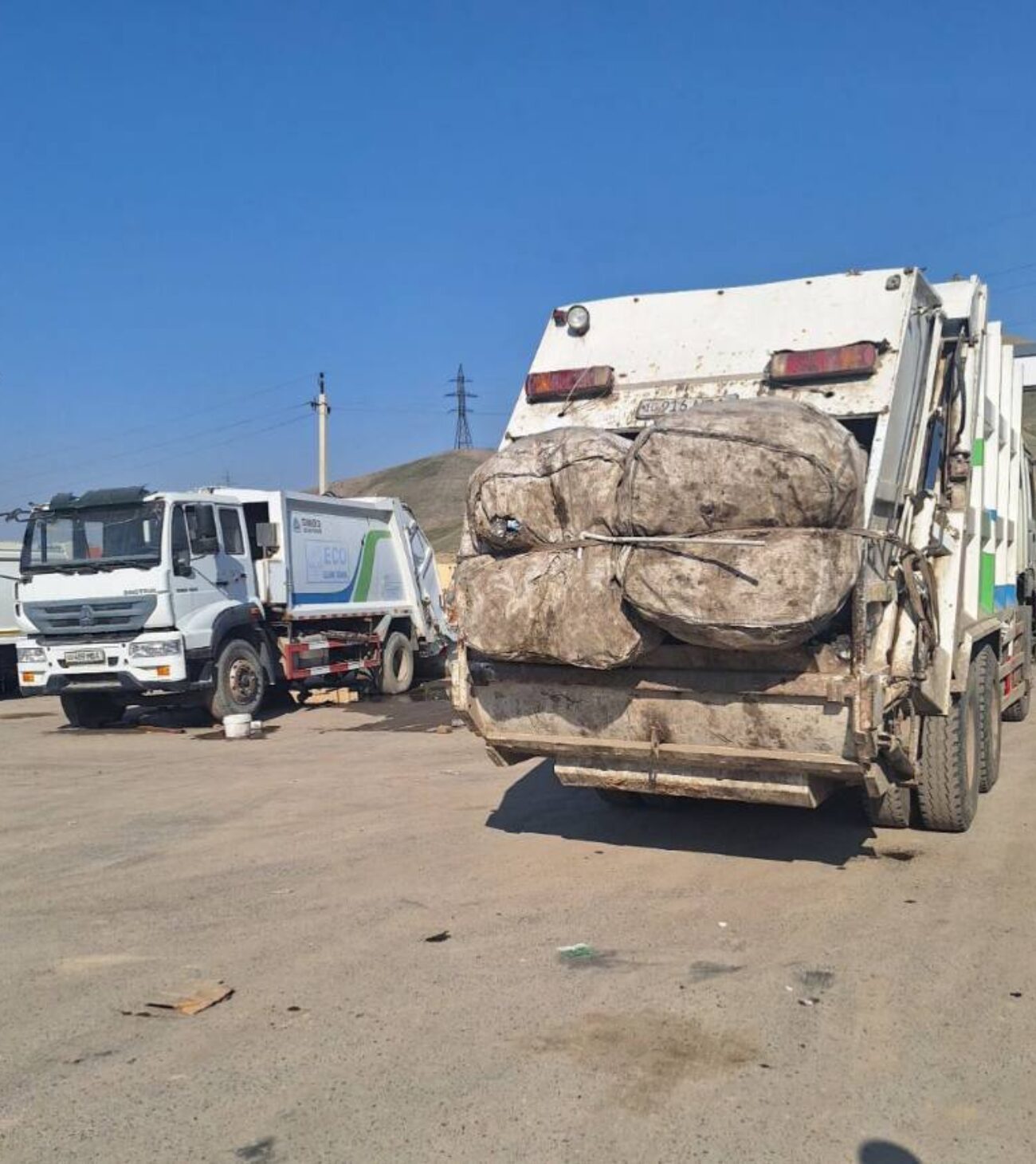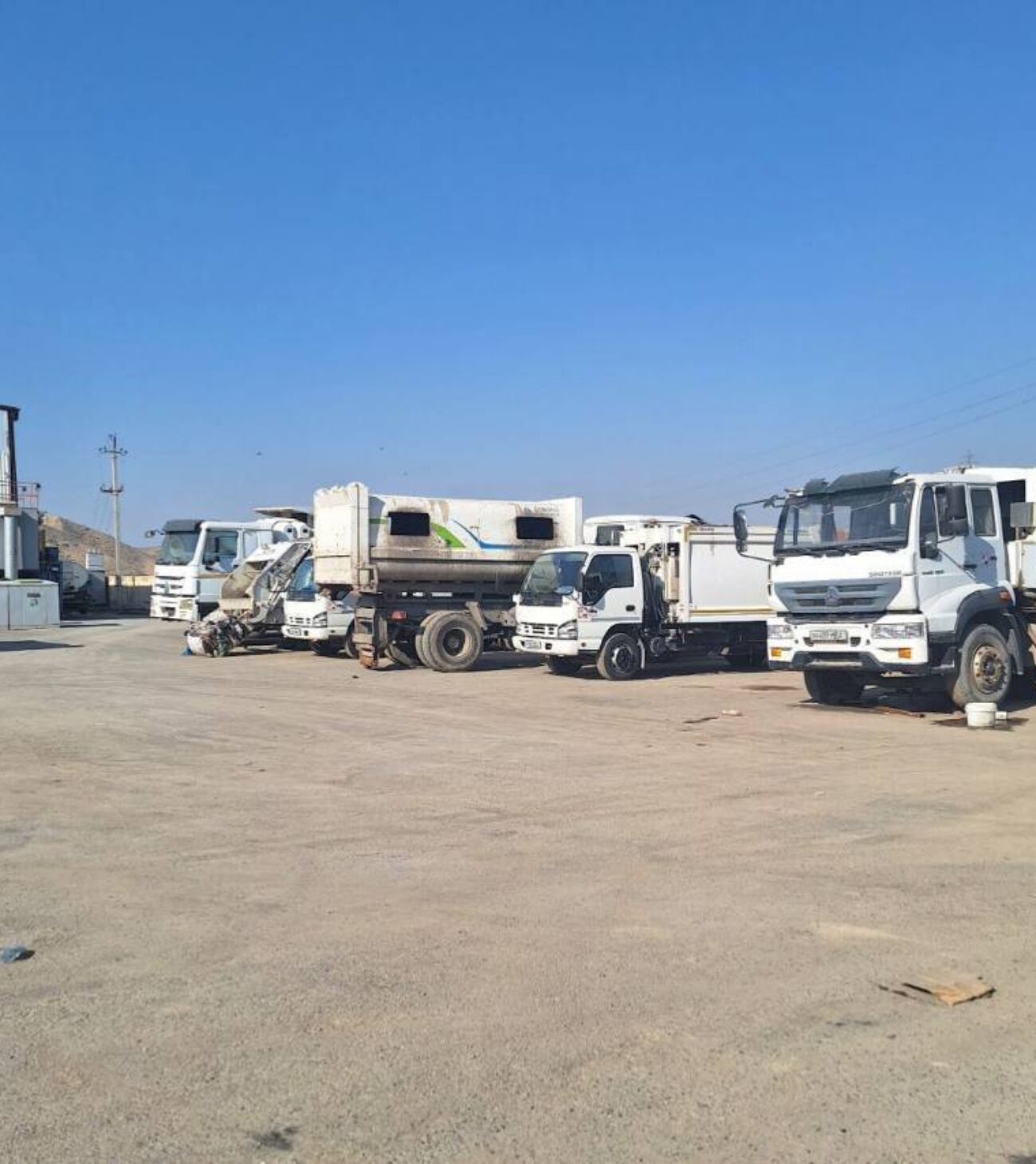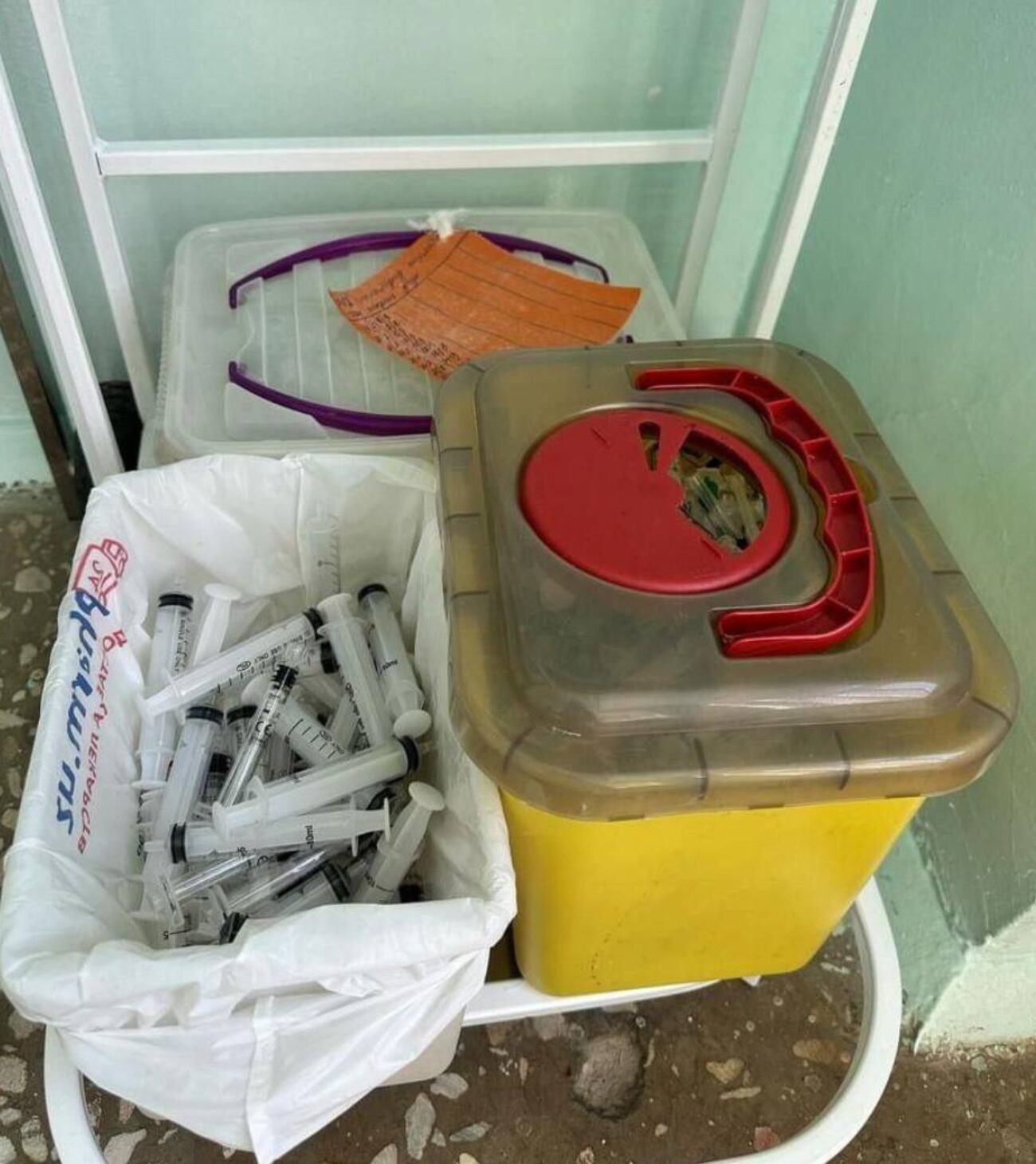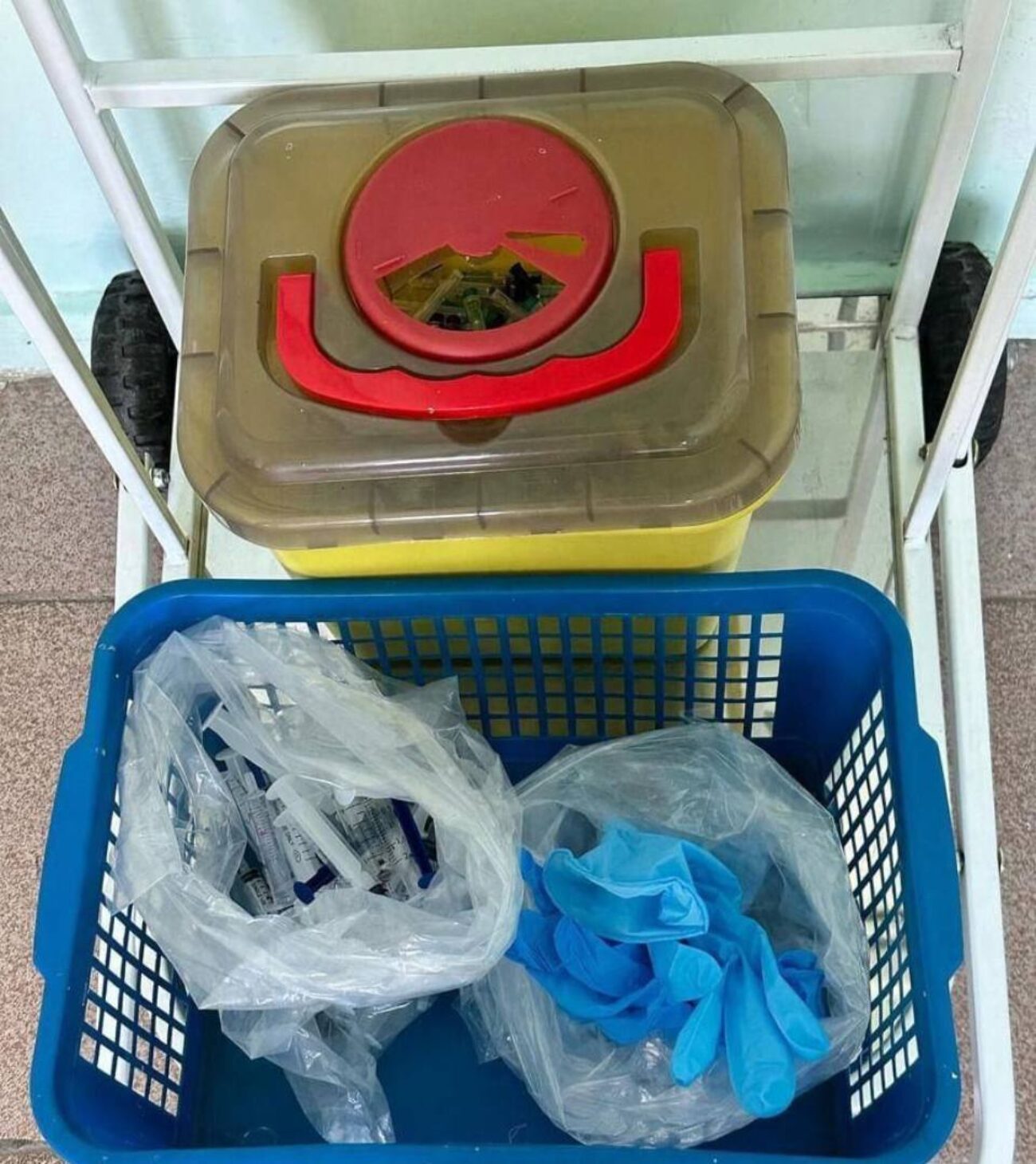Medical waste disposal and neutralisation remain one of the most pressing environmental problems in Uzbekistan, as well as in other countries in the region.
 Муфельная печь, установленная в медицинском объединении “Мингбулок”. Фото любезно предоставлено Наргис Косимовой. Ecolog.uzThe The experts note that the amount of medical waste is increasing annually, which creates significant challenges for the country in its safe treatment and disposal. Insufficient infrastructure for hazardous medical waste disposal, low awareness of healthcare workers and the public about disposal rules and standards, as well as the lack of strict control by government authorities are the factors that contribute to environmental pollution and threaten public health.
Муфельная печь, установленная в медицинском объединении “Мингбулок”. Фото любезно предоставлено Наргис Косимовой. Ecolog.uzThe The experts note that the amount of medical waste is increasing annually, which creates significant challenges for the country in its safe treatment and disposal. Insufficient infrastructure for hazardous medical waste disposal, low awareness of healthcare workers and the public about disposal rules and standards, as well as the lack of strict control by government authorities are the factors that contribute to environmental pollution and threaten public health.
Hospitals and clinics across the country perform medical procedures, draw blood samples, give injections, perform various surgeries, treat wounds daily. Healthcare workers deal with the biological fluids of healthy and infected patients, so waste from these activities poses an epidemiological hazard.
According to the Committee for Sanitary and Epidemiologic Welfare and Public Health under the Ministry of Health of the Republic of Uzbekistan, 18 thousand tons of waste are generated in the country’s healthcare facilities annually.
However, independent environmental experts report that, according to their data, the statistics are underestimated by approximately two times.
How Should It Be?
Back in the 1960s, environmental scientists and researchers from several countries proved that medical waste poses an epidemiological hazard to both the population and the environment. Back then, they began practicing medical waste classification and disposal by incineration.
According to the “Sanitary rules and norms for collection, storage, and disposal of waste in medical and preventive treatment facilities of the Republic of Uzbekistan” (SanPiN No. 0317-15), waste from medical and preventive treatment facilities includes all types of waste generated in hospitals, clinics, health centres, emergency wards, blood transfusion stations, longitudinal care clinics, research institutes, medical educational institutions, veterinary hospitals, pharmacies, pharmaceutical production facilities, sanitary facilities, forensic institutions, medical laboratories, and private healthcare facilities. These include remains of human or animal tissue, biological fluids, medical care items, pharmacological drugs, disposable syringes, blood transfusion systems, bandages, etc.
Medical waste is divided into four classes: “A”, “B”, “C”, and “D”. Class A waste is considered the safest: these are stationery, furniture, bedding that have not been in contact with infectious patients, disposable gowns, personal protective equipment (disposable masks, gloves), shoe covers. The remaining three classes are considered more dangerous in ascending order.
Class B: the tools and materials that could be infected with microorganisms with a high risk of infection.
Class C includes waste from infectious diseases departments of phthisiatric hospitals (clinics) contaminated with patients’ biological fluids, waste from microbiological laboratories working with tuberculosis pathogens.
Class D includes expired drugs, mercury-containing devices, disinfectants not to be used.
The main methods of medical waste treatment are incineration (in a device for the disposal of various types of waste through high-temperature controlled neutralisation with subsequent waste gas purification), sterilisation with water vapor under pressure, chemical disinfection, the use of microwaves, sterilisation with ionising, radioactive, and infrared radiation. In addition, medical waste is burned in incinerators. These activities are strictly regulated by the State Sanitary Committee.
After applying any of these treatment methods, decontaminated medical waste can be disposed of along with household waste in a landfill; in liquid form, it can be disposed of in a public sewer. To ensure proper processing, special tests are carried out throughout the world.
In Uzbekistan, treatment and disposal of medical waste are carried out in accordance with the laws “On Sanitary and Epidemiological Welfare of the Population”, “On the Protection of Public Health”, “On Waste”, “On Atmospheric Air Protection” and the Order of the Ministry of Health of the Republic of Uzbekistan “On compliance with sanitary and hygienic, anti-epidemic, and disinfection procedures in healthcare facilities”.
A CABAR.asia investigation revealed that in many regions of the country, especially those far from the center, medical waste, including hazardous waste, is disposed of using outdated methods, such as burning it in incinerators, which does not comply with modern standards. In addition, the lack of supervision over the disposal of medical waste generated by the population is of particular concern.
Outdated Infrastructure for Medical Waste Disposal in the Regions
Sobirkhon Mashrabov, the Head of Zero Waste LLC, confirmed that there were significant problems with medical waste disposal in the country.
“In Uzbekistan, up to 40 tons of medical waste are generated annually but their disposal does not meet sanitary, epidemiological, and environmental requirements,” he says. Mashrabov emphasised that even household waste incineration is extremely harmful to the environment.

Back in Soviet times, medical waste such as bandages, paper, used medical cotton, that is, ordinary medical waste, was burned in incinerators at every hospital. Now, as healthcare develops, waste includes more harmful substances. These are plastic disposable syringes, tourniquets, blood collection systems, expired medications, etc. They are mainly burned in small incinerators, the expert said.
“In Tashkent city and Tashkent region, waste is disposed of in accordance with standards but in other regions, the necessary infrastructure for this has not been created. Waste is mainly burned in small incinerators that have worked since the Soviet times. Although medical waste disposal is preventing infectious diseases, burning it in an incinerator in an unregulated way is harmful to both public health and the environment,” says Sobirkhon Mashrabov.
Problems related to the unregulated methods of the removal and disposal of animal remains and medical waste remain unsolved, he noted.
Our correspondent visited one of the landfills in the Andijan region, where hazardous waste is disposed of. This closed landfill “Andijon Special Eco Trans M.Ch. J” is located approximately a 40-minute drive from Andijan city.
The photographs show that the landfill is equipped quite well. It is located in a hilly area, remote from housing, and is well guarded – outsiders cannot get there. However, it was not possible to find out how well waste is disposed of there.
Medical Waste is Disposed of By Private Companies
Since 2018, private companies have been engaged in disposing of waste, including medical, in Uzbekistan. This decision had goals of improving the waste collection and disposal system and attracting investments in this area.
In 2022, Decree of the President of the Republic of Uzbekistan No. 189 “On priority measures to reform the waste management system” was adopted to provide comprehensive support to sanitary treatment enterprises, provide them with various benefits and preferences, expand their activities based on public and private partnerships.
According to this Decree, a number of mandatory fees levied on business entities carrying out such activities have been abolished, including income tax and social tax, and a number of other benefits have been provided to them. In addition to these benefits, over the course of 7 to 10 years, these companies will receive all special equipment and vehicles belonging to state-owned enterprises specialised in providing services in the field of solid waste management.
In accordance with the 2018 resolution of the Cabinet of Ministers on the approval of regulations in the field of waste management, disposal, including medical waste, was handed over to the private companies that receive requests from the country’s healthcare institutions.
For example, in the capital, Tashkent, several companies functioning under the Centre of State Sanitary Epidemiological Surveillance of Tashkent are engaged in the disposal of medical waste: “UTILMED-SERVICE”, “Utilizatsiya.uz”, and others.
The director of the UTILMED-SERVICE company Ulugbek Abdukadirov said that the company he heads has been recycling expired medicines and all types of medical waste that can be burned for three years already.
“Mainly, we are hired by the medical facilities, hospitals, those who import medicines, that is, pharmaceutical agencies, and others. However, there is harmful (hazardous) waste that requires a special permit; we do not dispose of it,” said Ulugbek Abdukadirov.
According to him, no healthcare institution has the right to use incinerators to burn medical waste, as this is considered illegal. The city’s Centre of State Sanitary Epidemiological Surveillance strictly monitors that such violations do not occur, he emphasised.
“Incinerators can only be used outside the city, but under no circumstances in the city. Even those hospitals located outside the city also refused to use incinerators, since the Centre of State Sanitary Epidemiological Surveillance fines everyone who uses these incinerators in residential areas,” Abdukadirov said.
He said that in accordance with the Sanitarian Rules and Norms (SanPiN) and the Ecology Committee, the location for disposal of medical waste should be no closer than 500 metres from residential premises. Their company disposes of medical waste in two special incinerators with volumes of 1 and 2 tons at a temperature of 1000 C°.
According to him, their company is located in the Tashkent region and fully complies with all the standards of the List of approved Sanitarian Rules and Norms (SanPiN) and the Ecology Committee.
Abdukadirov said that the procedure for disposal of medical waste is carried out in accordance with the protocol and based on the conclusion of a special commission.
“First, organisations in need of waste disposal send us the conclusion of the Ecology Committee of the city or district, then, a commission is created based on this conclusion. The company’s employees, together with members of the commission, dispose of waste by incineration, after which a document is created – a work completion certificate; it is distributed to everyone present during the process of incineration of this waste,” he said.
How Is Medical Waste Collected in Healthcare Facilities?
A doctor at one of the Tashkent hospitals Umida Khakimova (not her real name) told CABAR.asia about how medical waste is disposed of in their hospital.
According to her, waste, such as used bandages, medical cotton, gloves, is first soaked in a disinfectant 0.5% sodium hypochlorite solution for 10 minutes. Then, wearing special gloves, they transfer it into a special container with a yellow label. All this is thrown into a specialised waste container at the hospital, also with a yellow label.
“The yellow label is a sign that indicates which class this waste belongs to. When the garbage truck arrives, the workers know that the contents of this waste container cannot be mixed with other garbage. Then, this container with a yellow label is taken away for disposal outside the city,” said the doctor.
Syringes and blood transfusion systems, according to SanPiN standards, are also soaked in a disinfectant solution. All medical waste accumulated during the day is burned in the incinerators.
The doctor noted that all healthcare workers know how to dispose of waste and, in general, these measures are followed.
Her colleague from the Andijan regional hospital Shakhnoza Niyazova (not her real name) agrees with her. She says that, in general, all healthcare workers know by heart the rules for handling and disposing of medical waste. However, it is possible that one of the healthcare staff may make a mistake.
“Well, sometimes, there are situations when, if you are very tired, the brain slows down and the opposite happens,” she said.
Meanwhile, one of the representatives of the Ministry of Ecology, Environmental Protection, and Climate Change, who decided to stay anonymous, said that almost half of the incinerators in most regions of the country do not meet the standards.
According to him, they studied the situation with waste disposal in 176 healthcare facilities across the country. It turned out that they generate 9780.3 kg of medical waste daily (blood transfusion systems, syringes, gloves, bottles, cotton, bandages, etc.).
“When studying the recycling of generated waste, it was found that, basically, waste is disposed of by burning in incinerators. At the studied sites, 52% of incinerators partially meet the established sanitary and environmental requirements, and 48% of incinerators do not meet the requirements. That is, they were built close to populated areas, they are not airtight, chimneys are below the established height, etc.,” the official said.
What Does the Uzbekistan Government Do to Reduce the Risks of Improper Disposal?
Understanding the importance of waste disposal, especially hazardous waste, the government of Uzbekistan is carrying out a step-by-step plan to streamline these processes, attracting funds from both internal and foreign investors.
For example, on January 26, 2023, khokim of the Tashkent region Zoir Mirzayev signed a decree to build a landfill for medical waste disinfection in the Piskent district of the Tashkent region (50 km from the capital). The document states that a land plot of 1.5 hectares unused in agriculture on the territory of the Gulistan mahalla was allocated for the construction of the landfill. The Tashkent Regional Department of Ecology and Environmental Protection received the right to use this land.
The Committee for Sanitary and Epidemiologic Welfare and Public Health under the Ministry of Health of the Republic of Uzbekistan reported that they were working together with international organisations such as UNICEF and the Global Fund to train personnel in the medical waste management system and provide them with modern equipment.
Environmental Experts in Uzbekistan Concerned About the Problems of Medical Waste Disposal
Nevertheless, the situation with medical waste storage and disposal raises concerns among environmental experts.
In a CABAR.asia interview, the leading expert of the Centre for State Ecological Expertise of the Republic of Uzbekistan Maxim Malyshev said that a complete solution to the problem of medical waste disposal is still far away and requires huge costs.
According to the Presidential decree, the incinerators must be installed in every district. If they are installed in compliance with all necessary requirements, the risks of harm to the environment would be minimal, Malyshev believes.
“Currently in Uzbekistan, medical waste must be disposed of according to the Centre of State Sanitary Epidemiological Surveillance standards. A new waste management project was initiated by the Presidential decree in 2023. This will be carried out in every district and large entrepreneurs will do it. They are required to have incinerators. These incinerators should not affect the environment. They must comply with all requirements. For example, incinerators must be installed in an area at least 2 km away from places where people live. Practice shows that if you do not burn waste correctly in specialised incinerators, great harm is caused to the environment,” he said.
Environmental experts are even more concerned about how medical waste is disposed of by the population.
According to Sobirkhon Mashrabov, while healthcare facilities follow the regulations on medical waste disposal, the situation with the population is completely different.
“The population is not trained to dispose of hazardous waste. Only doctors know about such procedures. In addition, there are no separate waste containers for collecting and disposing of such waste in the populated areas of the country,” he said.
The most dangerous waste generated by the population is old, broken medical devices containing toxic elements, such as thermometers and blood pressure monitors containing mercury, as well as expired medicines, says Mashrabov.
“Of course, the most hazardous medical waste is concentrated in specialised facilities. Some organisations deal with the disposal of medical waste, they are paid, they come, pick up the waste, and take it away for disposal. However, what about ordinary people who will not call special services to dispose of several ampoules and syringes? People simply throw medical waste at public waste disposal points,” he said.
The expert believes that the collection and disposal of hazardous waste in the country is one of the most acute problems.
“The sanitary standards that currently exist are not observed. Environmental experts should address this issue. This is a sore subject for me. In Surxondaryo, Qashqadaryo, Samarkand, Andijan, and Fergana, as far as I know, they do not comply with the regulatory documents that exist,” the ecologist said.
Violations in Waste Disposal Procedures Are Identified
Meanwhile, an article published by the ELTUZ Telegram channel proves that not everything is so smooth in the field of waste disposal.
The investigation conducted by the journalists of this media accuses the former deputy chairman of the State Committee on Ecology and Environmental Protection Islombek Bokizhonov of using his official position and creating corruption schemes.
“Islombek Bokizhonov established BIO TECH ECO LLC and BI SAY LLC in the name of his close relative, his brother Shakhobiddin Bokizhonov. His close friend Otabek Rakhbarov, the director of the republican specialised association Sanitary Cleaning of Enterprises under the Committee, created “Valley of the Special Sanitary Tranche” LLC”, the investigation states.
According to the ELTUZ insiders, more than 80% of the “most profitable territories” put up for auction were handed over to enterprises owned by close relatives and friends of these officials.
The authors of this Telegram channel provide other details of the illegal activities of the officials. Read more about it here.
In October 2022, two deputy chairmen of the State Committee on Ecology – Umarbek Khalilov and Islombek Bokizhonov – were dismissed from their positions. The reasons for this were not provided.
What Should Be Done?
Considering the big problems associated with global climate change and environmental degradation, the experts recommend paying special attention to hazardous household waste disposal and strengthening measures for its proper storage and disinfection.
According to Mashrabov, the population should be trained to properly collect hazardous waste. He recommends installing separate containers for collecting medical waste in populated areas of the country.
According to the expert, it is necessary to develop a regulatory framework regulating the system of transportation, storage, treatment, and disposal of medical, pharmaceutical, and veterinary waste in accordance with international requirements.
Environmental experts believe that it is necessary to reform the waste management system, taking into account environmental, treatment, preventive, and social safety; create an effective and modern system for the collection, storage, transportation, treatment, and disposal of medical waste in healthcare and research institutions to prevent negative impacts on human health and the environment.
They propose reducing the amount of medical waste sent to landfills, paying special attention to the practice of public and private partnerships in processes related to the transportation, storage, treatment, and disposal of medical waste, and applying new technologies in these processes.


